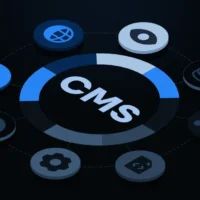In today’s digital age, email has become a critical communication tool for businesses and individuals alike. However, with the rise of cyber threats, email spoofing has become a prevalent issue, posing significant risks to the security and reputation of your domain. If you’ve discovered unauthorized emails using your domain name in DMARC reports, it’s crucial to take immediate action to protect your brand and prevent further abuse.
Understanding the Threat: Email Spoofing
Email spoofing involves the malicious use of your domain to send unauthorized and often deceptive emails. These emails can damage your organization’s reputation, compromise sensitive information, and erode trust with your stakeholders. To combat this growing threat, implementing robust email authentication measures is essential.
Step-by-Step Resolution Guide
1. Implement DMARC
Start by ensuring that your domain has a valid DMARC policy in place. DMARC acts as a shield against email spoofing by allowing you to define how legitimate emails from your domain should be authenticated and how unauthorized ones should be handled.
2. Analyze DMARC Reports
Regularly review the DMARC reports provided by email receivers. These reports offer valuable insights into the sources of unauthorized emails using your domain and whether they passed or failed authentication.
3. Adjust DMARC Policy
Based on your analysis, adjust your DMARC policy to either quarantine or reject emails that fail authentication. This proactive measure guides email receivers on how to treat suspicious emails, further fortifying your defenses.
4. Monitor and Investigate
Maintain constant vigilance by monitoring DMARC reports and promptly investigating any irregularities. Look for patterns and specific details about the unauthorized emails to strengthen your security measures.
5. Contact Your Email Service Provider
If you’re using an email service provider, leverage their expertise by reaching out for assistance. They may offer additional tools or features to enhance your defense against email spoofing.
6. Update SPF and DKIM Records
Ensure that your SPF and DKIM records are correctly configured. These authentication mechanisms play a crucial role in validating the legitimacy of email messages sent from your domain.
7. Educate Your Users
Empower your users and employees to recognize and report phishing threats. Educating them about the dangers of clicking on suspicious links or providing sensitive information in response to unexpected emails is fundamental to your defense strategy.
8. Use DMARC Monitoring Services
Consider employing DMARC monitoring services that provide extra layers of insight and real-time alerts. These services can be instrumental in identifying and mitigating threats promptly.
9. Collaborate with Other Organizations
In the spirit of collective security, collaborate with other organizations facing similar challenges. Sharing insights and experiences can contribute to a more comprehensive approach to combatting email spoofing.
10. Legal Action
In extreme cases where email spoofing causes significant harm, consult with legal professionals to explore potential legal actions against the perpetrators. Protecting your domain is not just a technical matter; it may also involve legal recourse to safeguard your brand and reputation.
Conclusion
Email spoofing is a persistent threat that demands a proactive and multifaceted approach. By implementing and continually refining your DMARC strategy, staying informed about emerging threats, and collaborating with others in the cybersecurity community, you can fortify your defenses and maintain the integrity of your domain in the face of evolving challenges. Stay vigilant, stay secure.




